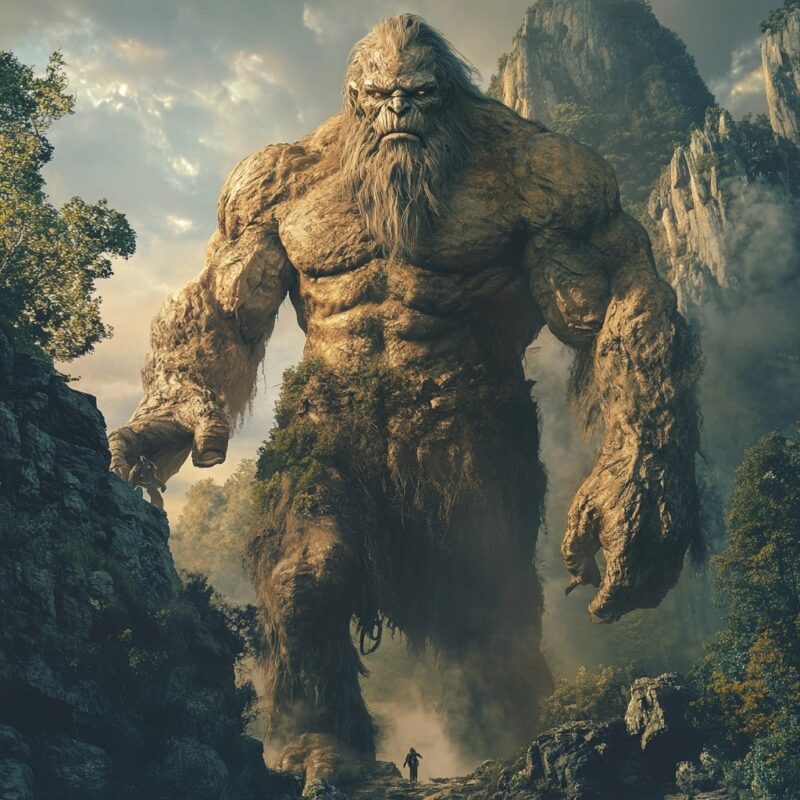Throughout history, myths and legends have captivated our imaginations with tales of giants. From the Anunnaki of ancient Mesopotamian lore to the Nephilim in biblical texts, stories of colossal beings have persisted across cultures. But could these giants have actually existed? To answer this question, we must delve into the biomechanical limits of human anatomy and explore whether a giant human form could be feasible.
The Biomechanical Constraints of Height
When considering the theoretical height a human could achieve, biomechanics plays a crucial role. The relationship between body size, limb proportions, and movement efficiency is complex. As humans grow taller, their body mass increases at a greater rate than their muscle strength and bone density can support. This discrepancy poses significant challenges for maintaining a functional gait.
Research indicates that the optimal height for efficient human locomotion is around 6 to 7 feet. Beyond this range, the mechanical demands on the body increase dramatically. For instance, a person standing at 7 feet tall would require significantly more muscle mass to support their weight and maintain balance. As height increases, the length of the legs must also be proportionate to ensure effective movement. Shorter legs relative to body height can lead to an inefficient gait, characterized by excessive energy expenditure and instability.
Theoretical Maximum Heights
While there is no definitive answer to how tall a human could theoretically grow while still functioning effectively, biomechanical studies provide some insights. Some researchers suggest that humans could reach heights of around 8 to 9 feet under ideal conditions. However, reaching such heights would require significant adaptations in body structure:
- Leg Proportions: For a person to be 8 or 9 feet tall, their leg length would need to be proportionately longer to maintain an efficient gait. This elongation would also necessitate changes in muscle distribution and joint mechanics.
- Bone Density: Taller individuals would need denser bones to support their increased weight and prevent fractures. This adaptation is crucial because as height increases, so does the stress placed on bones during movement.
- Muscle Mass: Increased height would require greater muscle mass not only for locomotion but also for maintaining posture and balance. The distribution of this muscle mass would need to be optimized for movement efficiency.
- Center of Gravity: A taller individual’s center of gravity shifts higher, which can affect balance and stability during walking or running. Adjustments in body proportions would be necessary to counteract these effects.
Historical Context: Myths of Giants
The idea of giants isn’t merely a product of folklore; it often reflects humanity’s fascination with size and strength. Many ancient civilizations spoke of beings who walked among them, often attributing divine qualities or extraordinary abilities to these figures. The Anunnaki, for example, were described as powerful beings who came from the heavens and played a significant role in shaping human civilization.
When considering the theoretical implications of a human reaching a height of 15 feet, several significant biomechanical challenges arise that would impact their ability to support their own weight, maintain blood circulation, and function effectively.
Structural Support and Weight Distribution
At 15 feet tall, a human would face immense challenges related to structural integrity. The relationship between height and weight is not linear; as height increases, the volume and mass increase at a much greater rate than the cross-sectional area of bones and muscles. This means that the bones would need to be significantly denser and thicker to support the additional weight. Current human skeletal structures are not designed to handle such extreme proportions.
For instance, the strength of bones is proportional to their cross-sectional area, while weight is proportional to volume. As a result, a 15-foot tall individual would likely experience severe skeletal stress, leading to an increased risk of fractures or structural failure under their own weight.
Blood Circulation Challenges
Another critical factor is blood circulation. The heart pumps blood through the circulatory system, relying on pressure generated by cardiac output. As height increases, so does the distance that blood must travel from the heart to reach extremities like the feet. At 15 feet tall, maintaining adequate blood flow would be a significant challenge.
- Increased Distance: The longer distance would require a stronger heart to generate sufficient pressure to pump blood effectively throughout the body. Current human cardiovascular systems are not equipped to handle such demands without risking conditions like ischemia (insufficient blood flow) in the extremities.
- Gravity Effects: Gravity plays a crucial role in circulation. The taller an individual is, the more difficult it becomes for blood to return from the lower extremities back to the heart. This could lead to pooling of blood in the legs and feet, resulting in poor circulation and potential complications like varicose veins or even tissue damage.
- Vascular Resistance: As height increases, vascular resistance also increases due to longer blood vessels. This means that more force would be needed for blood to flow through these vessels, which could lead to elevated blood pressure and strain on the heart.
Giants are literally woven into lore and it’s an intriguing thought experiment to consider a human at 15 feet tall, the biomechanical realities suggest that such a height would pose insurmountable challenges for supporting body weight and maintaining proper physiological functions like blood circulation. The structural limitations of human anatomy indicate that while giants may exist in myths and legends, they are unlikely to have been feasible in reality due to these fundamental biological constraints.
While there is no scientific evidence supporting the existence of literal giants as described in these myths, examining our understanding of human biomechanics raises intriguing questions about what might have inspired such stories. Were they exaggerations based on encounters with exceptionally tall individuals? Let’s face it, a 7 foot man would seem like a literal giant if you’re only 5.5 foot. Or do they stem from collective memories of prehistoric hominins who may have had larger physiques?










